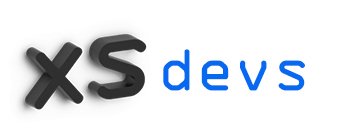WordPress is one of the most popular content management systems (CMS) in the world, powering millions of websites. Whether you want to create a personal blog, a business website, or an e-commerce store, WordPress provides a user-friendly platform that allows you to build and manage your website easily. In this beginner’s guide, we will walk you through the basics of getting started with WordPress.
Table of Contents
- Introduction to WordPress
- Setting Up WordPress
- Navigating the WordPress Dashboard
- Choosing a Theme
- Customizing Your Website
- Adding Content to Your Website
- Installing Plugins
- Managing Users and Permissions
- Optimizing Your Website
- Conclusion
- FAQs
1. Introduction to WordPress
WordPress is a free and open-source CMS that offers a flexible and customizable platform for website creation. It eliminates the need for coding knowledge, making it accessible to beginners and experienced users alike. WordPress is known for its user-friendly interface, extensive theme and plugin libraries, and active community support.
2. Setting Up WordPress
To start using WordPress, you’ll need a domain name and web hosting. Many hosting providers offer one-click WordPress installation, making the setup process quick and straightforward. After installation, you can access your WordPress website through the admin panel.
3. Navigating the WordPress Dashboard
The WordPress dashboard is your control center, where you can manage your website’s content, appearance, and functionality. Familiarize yourself with the dashboard’s main sections, such as the toolbar, sidebar, and main content area. Here, you can create and edit posts and pages, customize your website’s settings, and install plugins and themes.
4. Choosing a Theme
WordPress offers a wide range of themes that control the appearance of your website. Browse the theme directory within the WordPress dashboard or explore premium theme marketplaces. Consider your website’s purpose, design preferences, and functionality requirements when choosing a theme. Once you find a theme you like, you can install and activate it with just a few clicks.
5. Customizing Your Website
WordPress allows you to customize your website to reflect your unique brand and style. Use the WordPress Customizer to modify various aspects of your theme, such as colors, fonts, layouts, and header images. Additionally, you can create custom menus, add widgets to your sidebar or footer, and set up a static homepage.
6. Adding Content to Your Website
With WordPress, you can easily create and manage your website’s content. Start by creating pages that represent the main sections of your website, such as the home page, about page, and contact page. Then, create posts for your blog or news section. WordPress provides a user-friendly editor that allows you to format text, add images and videos, and organize your content.
7. Installing Plugins
Plugins extend the functionality of your WordPress website. There are thousands of plugins available for various purposes, such as SEO optimization, contact forms, e-commerce integration, and social media sharing. Install plugins that align with your website’s needs but be cautious not to overload your website with unnecessary plugins, as they can impact performance.
8. Managing Users and Permissions
WordPress allows you to create multiple user accounts and assign different roles and permissions. This is particularly useful when collaborating with others on your website or hiring content creators or administrators. Assign appropriate roles to ensure that each user has the necessary access and permissions for their tasks.
9. Optimizing Your Website
Optimizing your WordPress website is essential for better performance and user experience. Implement SEO best practices by using SEO plugins, optimizing your content for keywords, and creating descriptive meta tags. Additionally, optimize your website’s speed by using caching plugins, optimizing images, and choosing a reliable hosting provider.
10. Conclusion
WordPress provides a beginner-friendly platform for creating and managing websites. By following this beginner’s guide, you’ve learned the essential steps to get started with WordPress. Remember to explore further, experiment with different themes and plugins, and continually update and improve your website to meet your goals and engage your audience.
FAQs
- Q: Is WordPress free to use? A: Yes, WordPress is an open-source software that is free to download and use. However, you will need to purchase a domain name and web hosting to make your website accessible on the internet.
- Q: Can I change my WordPress theme later? A: Yes, you can change your WordPress theme at any time. Simply install and activate a new theme, and your website’s appearance will be updated accordingly. However, be aware that changing themes may require additional customization.
- Q: How do I backup my WordPress website? A: There are several plugins and methods available to backup your WordPress website. You can use plugins like UpdraftPlus or backup your website manually by downloading the files and exporting the database. Regular backups are essential to protect your website from data loss or security issues.
- Q: Can I add functionality to my WordPress website without coding? A: Yes, WordPress offers a vast library of plugins that allow you to add functionality to your website without writing code. Plugins provide features like forms, e-commerce, social media integration, and more.
- Q: Is WordPress suitable for e-commerce websites? A: Yes, WordPress can power e-commerce websites with the help of plugins like WooCommerce. WooCommerce provides robust features to create and manage an online store, including product listings, shopping carts, and payment gateways.

